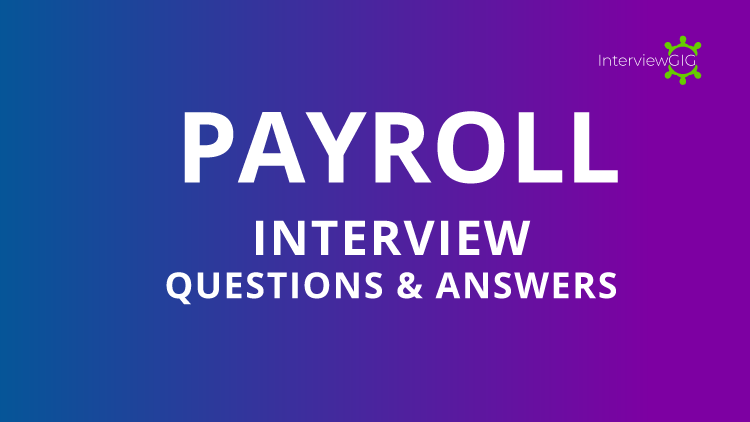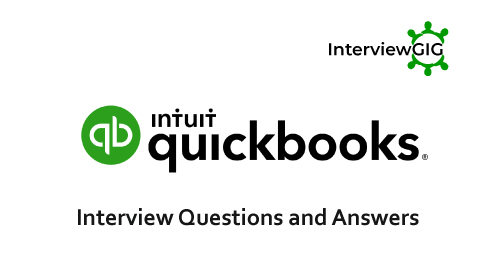MBA Finance Interview
An MBA in Finance is a specialized graduate degree program focusing on advanced financial concepts, strategies, and practices within business environments. It equips students with comprehensive knowledge and skills in areas such as financial analysis, investment management, risk assessment, and corporate finance.
The curriculum typically includes courses in financial accounting, capital markets, derivatives, and financial modeling. With a strong emphasis on quantitative analysis and decision-making, an MBA in Finance prepares professionals for roles in investment banking, corporate finance, asset management, and financial consulting. Graduates possess the expertise to navigate complex financial landscapes and drive strategic financial decisions within organizations.
Question: Why did you choose to pursue an MBA in Finance?
Sample Answer: I chose to pursue an MBA in Finance because I have a strong interest in the world of finance and investment. I wanted to gain a comprehensive understanding of financial principles, enhance my analytical skills, and position myself for a career in financial management. Additionally, I believed that an MBA would provide me with the necessary knowledge and network to excel in this field.
Question: What is your understanding of financial management?
Sample Answer: Financial management involves planning, controlling, and monitoring a company’s financial resources to achieve its goals and objectives. It includes activities such as budgeting, financial analysis, risk management, and capital allocation to maximize shareholder value.
Question: How do you analyze a company’s financial statements?
Sample Answer: I start by reviewing the income statement, balance sheet, and cash flow statement to assess the company’s financial health and performance. I analyze key financial ratios such as liquidity ratios, profitability ratios, and leverage ratios to identify strengths and weaknesses. I also look for trends over time and compare the company’s performance with industry benchmarks.
Question: What is the difference between equity and debt financing?
Sample Answer: Equity financing involves raising capital by selling ownership shares in the company, which does not require repayment but dilutes ownership. Debt financing involves borrowing money that must be repaid with interest, typically in installments. Equity is riskier for investors but doesn’t create debt obligations, while debt financing involves interest payments but doesn’t dilute ownership.
Question: How do you calculate the cost of capital?
Sample Answer: The cost of capital is the weighted average of a company’s cost of debt and cost of equity. To calculate it, you need to determine the cost of debt (interest rate on debt) and the cost of equity (required rate of return by shareholders) and then apply the respective weights based on the company’s capital structure.
Question: Can you explain the concept of time value of money (TVM)?
Sample Answer: Time value of money (TVM) is the concept that a sum of money has a different value today compared to its value in the future. It’s based on the idea that money can earn interest or have investment potential over time. TVM is crucial in financial decision-making, as it helps in evaluating investments, loans, and the impact of inflation on the value of money.
Question: How do you assess the risk associated with an investment or project?
Sample Answer: I assess risk by conducting a thorough risk analysis. This includes identifying potential risks, quantifying their impact, and determining the likelihood of occurrence. I use tools like sensitivity analysis, Monte Carlo simulations, and risk-adjusted discount rates to factor risk into financial decisions.
Question: What are the key financial ratios you would use to evaluate a company’s performance? and how are they interconnected?
Sample Answer: Some key financial ratios include the current ratio (liquidity), return on equity (profitability), and debt-to-equity ratio (leverage). These ratios are interconnected; for example, a high debt-to-equity ratio may increase financial risk, affecting the return on equity and overall liquidity.
Question: Describe a financial project or case study you worked on during your MBA program?
Sample Answer: During my MBA program, I worked on a case study involving a retail company looking to expand its operations into new markets. My team and I conducted a financial analysis that included market research, financial forecasting, and risk assessment. We recommended a financing strategy, assessed the potential return on investment, and presented our findings to the class. It was a valuable experience in applying classroom knowledge to real-world scenarios.
Question: How do you handle financial analysis under uncertainty or risk?
Sample Answer: When dealing with uncertainty or risk in financial analysis, I follow a systematic approach. I assess the probability of various scenarios, conduct sensitivity analyses, and use tools like Monte Carlo simulations to model outcomes. Additionally, I stay updated on industry trends and economic indicators to make informed judgments in dynamic situations.
Question: Tell me about a successful financial project or deal you were involved in. What was your role, and what were the outcomes?
Sample Answer: In my previous role as a Financial Analyst at XYZ Company, I played a pivotal role in a merger and acquisition deal. My responsibilities included conducting due diligence, financial modeling, and risk assessment. We successfully acquired a competitor, which led to increased market share and cost synergies. As a result, our company’s revenue grew by 20%, and we exceeded our return-on-investment targets.
Question: What are the key factors to consider when valuing a company?
Sample Answer: Valuing a company involves assessing various factors, including its financial statements, growth prospects, competitive position, and industry trends. Key factors include analyzing cash flows, discount rates, market multiples, and the company’s risk profile. Understanding the economic environment and market conditions is also crucial in determining the company’s intrinsic value.
Question: How do you approach financial risk management in your current or previous roles?
Sample Answer: In my previous roles, I approach financial risk management by first identifying potential risks and their impact on financial objectives. I develop risk mitigation strategies, such as diversification of investments, hedging, and insurance. Regular monitoring and reporting of risks are essential, along with adapting strategies as circumstances change.
Question: What are the key financial metrics you consider when assessing the financial health of a company?
Sample Answer: When assessing financial health, I focus on metrics such as liquidity ratios (e.g., current ratio), profitability ratios (e.g., ROE and ROA), leverage ratios (e.g., debt-to-equity ratio), and efficiency ratios (e.g., inventory turnover). These metrics provide a comprehensive view of a company’s operational and financial performance.
Question: Discuss your experience with financial modeling and forecasting.
Sample Answer: I have extensive experience with financial modeling and forecasting. I’ve created complex financial models to evaluate investment opportunities, develop budgets, and perform scenario analyses. I’ve used software like Microsoft Excel and specialized modeling tools to make accurate financial projections and support strategic decision-making.
Question: How do you ensure compliance with financial regulations and standards in your work?
Sample Answer: Compliance with financial regulations and standards is non-negotiable. I stay updated on relevant regulations, such as GAAP or IFRS, and ensure that my work adheres to these standards. I maintain accurate records, perform regular audits, and collaborate with legal and compliance teams to address any compliance issues promptly.
Question: How do you handle conflicts or disagreements with team members or colleagues when working on financial projects?
Sample Answer: I approach conflicts with an open and collaborative mindset. I actively listen to different perspectives, seek common ground, and encourage constructive dialogue. If needed, I involve a mediator or escalate the issue to higher management. My goal is to reach a resolution that benefits the project and maintains a positive working environment.
Question: What do you think are the current trends and challenges in the finance industry?
Sample Answer: Some current trends in the finance industry include the rise of fintech, increased emphasis on ESG (Environmental, Social, Governance) investing, and the impact of digitalization on traditional banking. Challenges include regulatory changes, cybersecurity threats, and adapting to rapidly evolving customer expectations.
Question: How do you handle financial data confidentiality and ethical dilemmas in finance?
Sample Answer: I treat financial data confidentiality with utmost seriousness. I strictly adhere to ethical guidelines and company policies. In cases of ethical dilemmas, I prioritize transparency, consult with supervisors or ethics committees, and take appropriate actions to uphold ethical standards.
Question: Do you have any experience with financial software or tools?
Sample Answer: Yes, I am proficient in financial software such as Microsoft Excel, Bloomberg Terminal, and financial modeling software like DCF analysis tools. I also have experience with accounting software like QuickBooks and ERP systems, which I have used to manage financial data and streamline processes.





